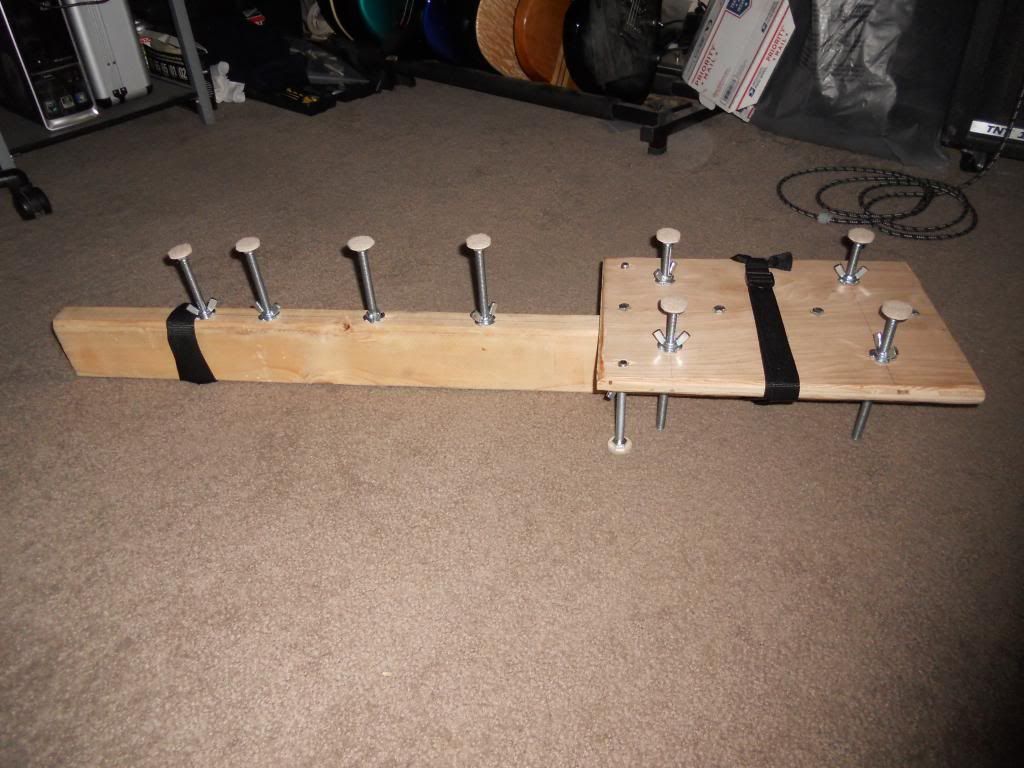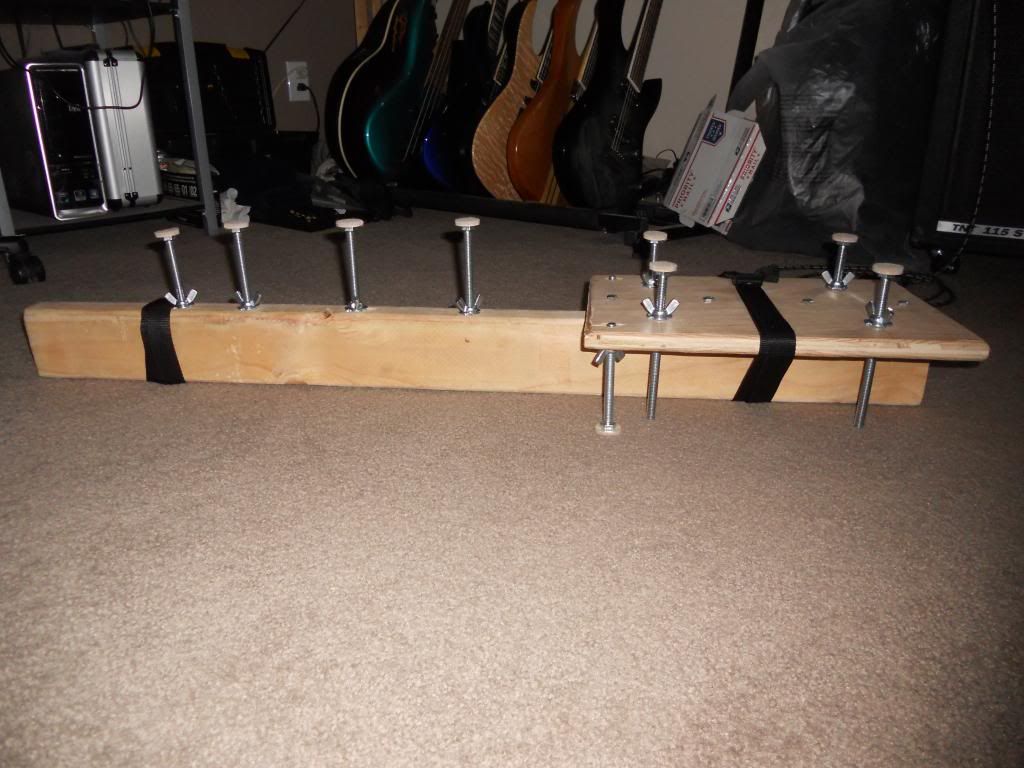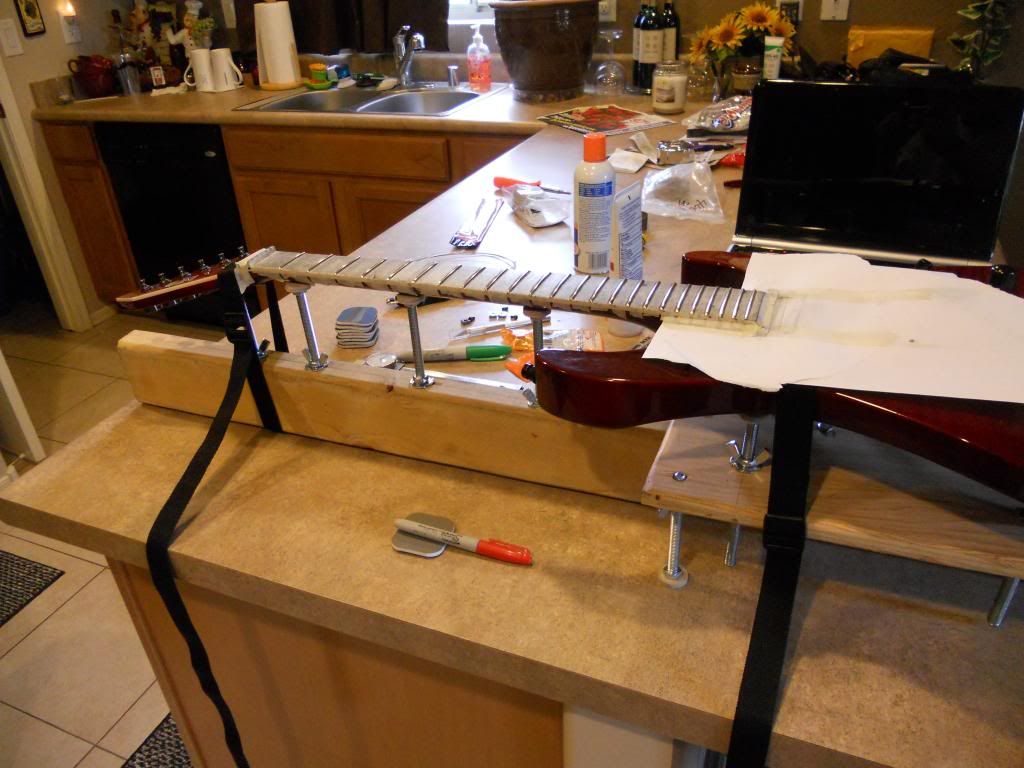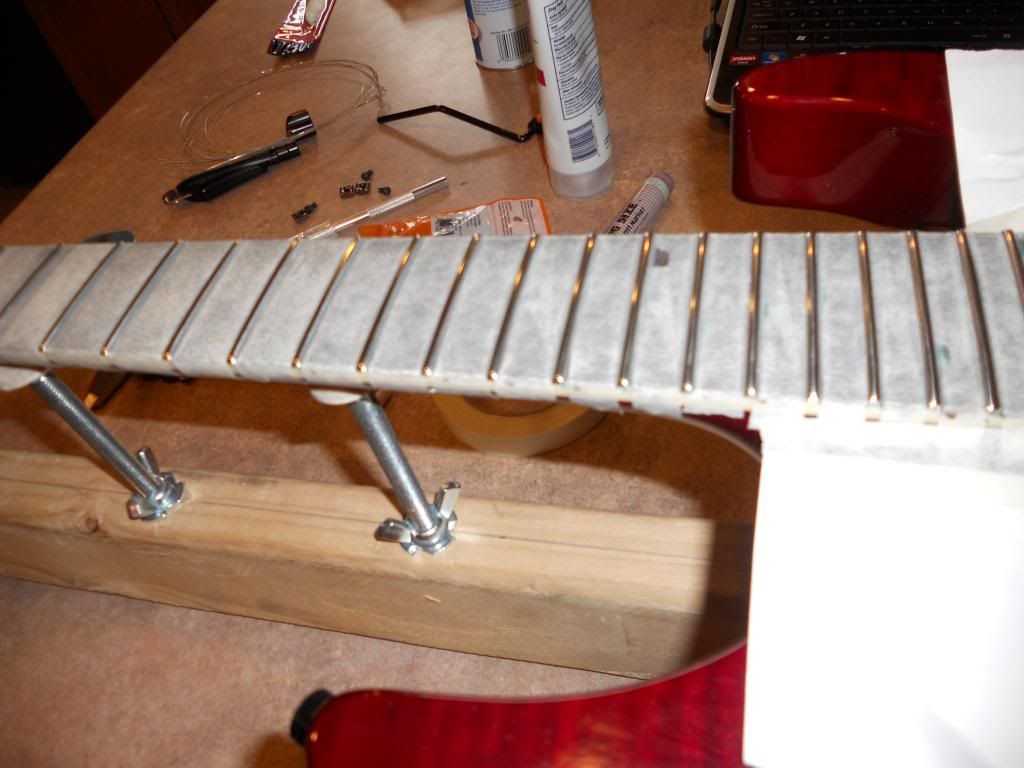Done a bunch of fret work now so I decided I wanted a better way to brace neck than piling paper under the neck.. lol. So not wanting to spend $380+shipping for the Erlewine one, I decided on $35 for my own. A 2x4, small piece of 3/4" plywood, 3/8x16 wood inserts, 5" bolts, wing nuts as jam nuts for the bolts, some self adhesive felt pads for the top of the bolts, and 2 soft utility straps. May get some shorter bolts or cut these down, but pretty simple if you look at the pics so here it is..




Like jewels and plays like butta now. Woohoo!




Like jewels and plays like butta now. Woohoo!

 I HATE BEING LEFT HANDED!
I HATE BEING LEFT HANDED!  I rock out to Baby metal because Wilkinsi said I can't listen to Rick Astley anymore.
I rock out to Baby metal because Wilkinsi said I can't listen to Rick Astley anymore.

Comment